MINAS GERAIS
The state of Minas Gerais is dotted with pretty colonial towns, set in a stunning landscape of rugged hills. Ouro Preto and Congonhas are UNESCO World Heritage Sites.
Minas’s old mining towns are laid out along the Estrada Real, once Brazil’s first great wagon trail and now one of its major tourist routes.
INHOTIM
Located in the municipality of Brumandinho Minas Gerais Inhotim occupies an area of 87 acres of beautiful gardens - part of which was created by landscape
 |
Planning our Route
|
architect Roberto Burle Marx (he was from the same town as Karl Marx) - and works of art displayed indoors as well as outdoors.
 |
Tunga
|
 |
Olafur Eliasson, Viewing Machine
|
Inhotim is a place for education meditation and delight. The Inhotim art collection is comprised of about 500 works by over 100 artists from 30 different countries.
With a focus on contemporary art produced from the 1960s through to today the collection includes sculptures ,installations , paintings, drawings, photography, film and video.
 Claudia Andujar, Swiss, Jewish Parents escaped holocaust, and moved to Brazil. She lived and wrote about the Yanomami tribe in Brazil. And these are her photographs.
Claudia Andujar, Swiss, Jewish Parents escaped holocaust, and moved to Brazil. She lived and wrote about the Yanomami tribe in Brazil. And these are her photographs.
The museum makes great use of various types of exibition space.
 |
These beautiful tree sculptures are done by Hugo Franca
|
Assorted works are displayed outdoors in the garden,immersed in the woods on a mountaintop and on a body of water. Other works are found indoors in specially built pavilions.
 |
Yayoi Kusama Narcissus Garden
|
 |
John Ahearn, USA Rigoberto Torres, Puerto Rico
|
 |
Lygia Pape, Brazil
|
 |
Paul Pfeiffer, USA
|
Inhotim maintains partnerships with various institutions in order to promote exchanges between collections of art and also
allowing an introduction of new flora species into natural environments. The botanical garden holds the world’s largest collection of palm trees with around 1500 species/hybrids/varieties.
 |
Jorge Macchi - Piscina
|
 |
Doug Atkin
 This Gallery used all natural fabrics and fiber... This Gallery used all natural fabrics and fiber...
|
 |
Rirkrit Tiravanija Palm Pavilion
|
 |
Piling a round object through a blade
|
 |
Dan Graham Bisected Triangle
|
 |
Sonic Pavilion - Matthew Barney, American, San Francisco
|
 |
Chris Burden, American, Beehive Bunker
|
There is no predetermined linear path, an obvious order, or a dominant perspective. The paths that run naturally through the park offers free routes between the works and the outdoor galleries. The coexistence of the closed and open spaces promotes a unique experience for enjoying the works of art.

Good bye to our wonderful driver
OURO PRETO
One of the first gold towns in Minas Gerais and a former state capital, Ouro Preto is built on a series of hills.
Steep,curving streets lined with 18th century residences, many of which have been converted into restaurants,bars, and shops, link the hills.
The streets lead to pretty little squares dominated by Baroque churches and stately town houses. This town was founded in 1698 this city soon became the capital of the Portuguese gold rush. The boom ended
with the depletion of the mines but evidence of golden-age splendor can still be seen. It nurtured a generation of Latin America’s finest artists and craftsmen - Aleijadinho, a great sculptor,
and Mestre Athayde a great ecclesiastical painter.
UNESCO declared the city centre a World Heritage Site- Brazil’s first - in 1980. Ouro Preto is often considered the cradle of the Brazilian nation because it was the principal focus of the late 18th century independence movement inspired by Enlightenment ideas and the American Revolution.
The revolution was led by Tiradentes (tooth puller) who was the only rebel against the Portuguese colonizers to be executed. He is a cult figure in Brazil, mainly for the poor.
Church of St. Frances of Assisi
 |
St. Francis taking Christ down from the cross...
|
This is an example of Brazilian religious architecture, designed by Aleijadinho, with wood and soapstone sculptures by the same artist. Aleijadinho “little cripple” was his nickname. His hands were deformed from leprosy. His partner Manuel da Costa Athayde was the painter.
The tablet on the facade showing St Francis receiving the stigmata is believed to have been Aleijadinho’s first great carving.
Aleijadinho and Athayde were considered Brazil’s greatest artists.
Church of Our Lady of the Pilar
A church that marked the culmination of Golden Age architecture, with carved works painted entirely in gold.
Museum of the School of Mines

Polishing stones....
A complete mineralogical view of Brazil, in addition to displays of geological artifacts from the other countries.
MARIANA
The oldest colonial town in Minas Gerais which was also a significant mining town, was the capital of the state in the first half of the 18th century and far more important than Ouro Preto.
It is an enchanted city, with picturesque streets, with balconies of wood,iron and soapstone.

Beautiful stone Portuguese tile walkways.
Situated on Minas Gerais Square are the churches of St. Francis of Assisi and Our Lady of Carmel, City Hall and the Pillory.
Making palm leaves art.
CONGONHAS
Congonhas houses important works from the Golden Age of Brazil.
Church of Bom Jesus de Matosinhos...
Constructed in 1771, the Baroque Church was built by the diamond miner Feliciano Mendes, who after recovering from the brink of death, vowed to build a church in homage to “Bom (Good) Jesus”.
This is considered one of the most important works in Brazil. At the entrance of the church 12 soapstone statures of prophets from the Old Testament overlook a garden,
where six chapels containing life-size figures commemorate the Passion of Christ. The church is famous for preserving the most impressive ensemble of statures in Latin America, carved by Aleijadinho between 1780-1814.
 |
The Last Supper
|
 |
The Resurrection
|
 |
Carrying the Cross
|
 |
The Agony in the Garden
|
 |
The scourging at the pillar; the crowing of thorns
|
 |
The Crucifixion; Aleijadinho’s final masterpiece; Self portrait on right with hands behind his back
|
Aleijadinho could no longer walk and completely lost the use of his hands. His students carried him up the hill each day and strapped hammers and chisels to his arms. The Crucifixion , is his final masterpiece, and considered his finest work of art.
TIRADENTES
Visiting a soapstone market in the square...
St Anne Museum located in a former prison. 300 images of St. Anne. Dated from the 17th-19th centuries. Collected by Angela Gutierrez during over 40 years donated to the public.
Again, a product on the gold, producing some of the most lavish Baroque church interiors of all Brazil. The town takes its name from the nickname “Tiradentes” (tooth puller) of Jose da Silva Xavier (1746-1792) , and erstwhile resident who became a martyr of the Inconfidencia Minerva, the first movement inBrazil towards independence from Portugal.
The center of Tiradentes is tiny. The church Matriz de Santo Antonio is one of the finest Baroque churches in Brazil, with wonderful wood carvings and gilt interiors. Aleijadinho created parts of the facade.
The Igreja of Rosario features some elegant statues and pained panels.
The 18th century fountain the Chafariz de Sao Jose in blue soapstone, represents love ,good fortune and health.
SAO JOAO DEL REI
The largest of the historic towns of Minas Geris, is a bustling place with well-preserved colonial buildings.

Moving faster than our train!

Scenes from the train...
The Maria Fumaca railway station, is a tiny locomotive museum housing and old Philadelphia-built , narrow gauge steam train. It was used by Emperor Dom Pedro II when he traveled to Minas Gerais from Rio in the 19th century.

A small town named after a special cake that is made here

Great Brazilian coffee and watching it being brewed
 Saying goodbye to my wonderful guide, Harold , who transferred his passion for this area to me!
Saying goodbye to my wonderful guide, Harold , who transferred his passion for this area to me!



 Claudia Andujar, Swiss, Jewish Parents escaped holocaust, and moved to Brazil. She lived and wrote about the Yanomami tribe in Brazil. And these are her photographs.
Claudia Andujar, Swiss, Jewish Parents escaped holocaust, and moved to Brazil. She lived and wrote about the Yanomami tribe in Brazil. And these are her photographs.





















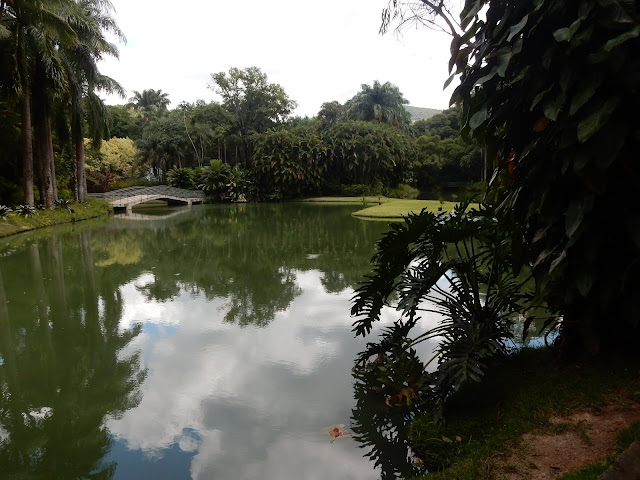





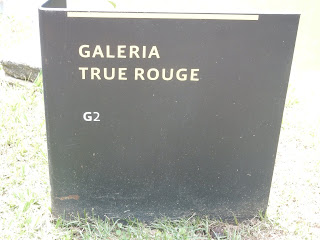











































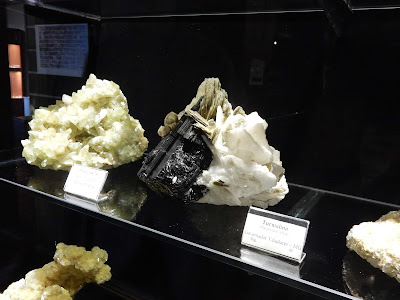











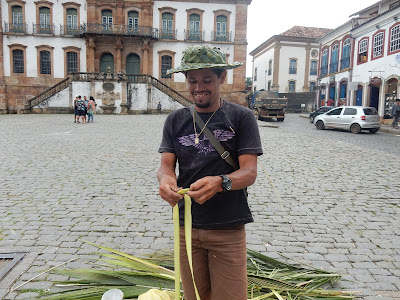
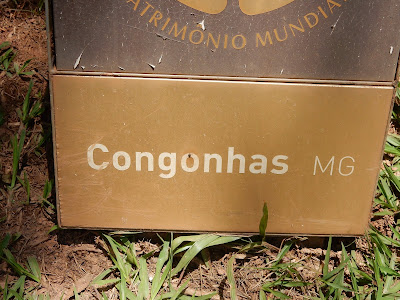















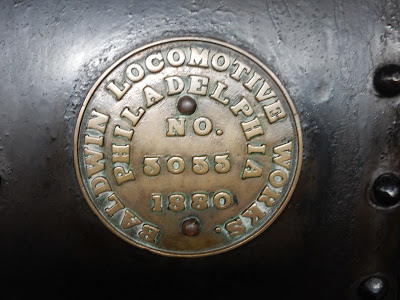












No comments:
Post a Comment